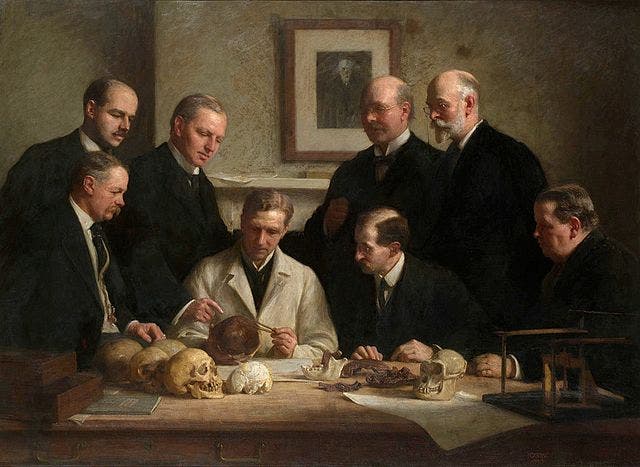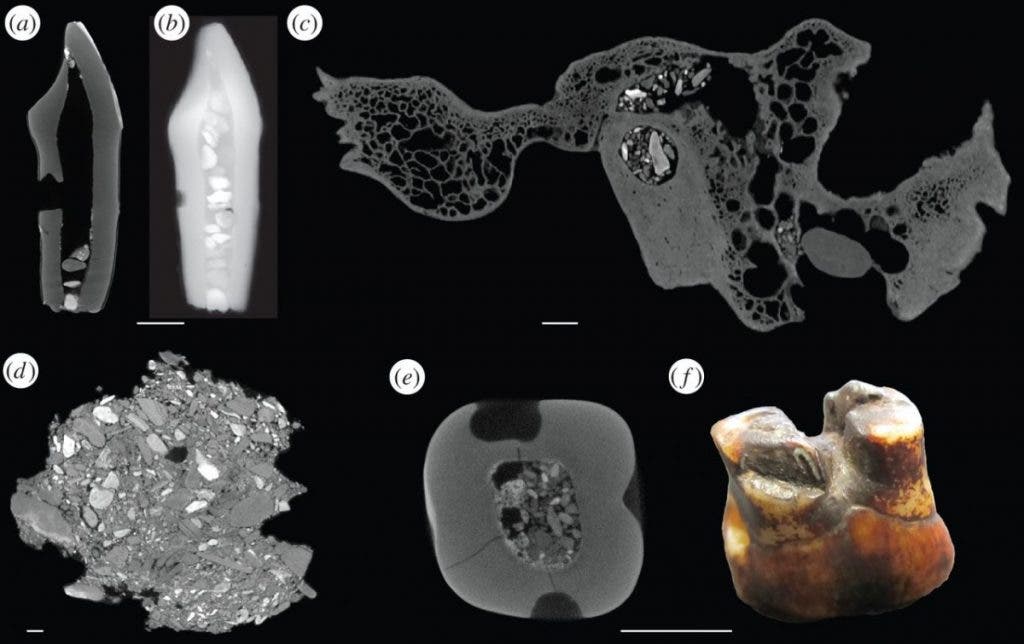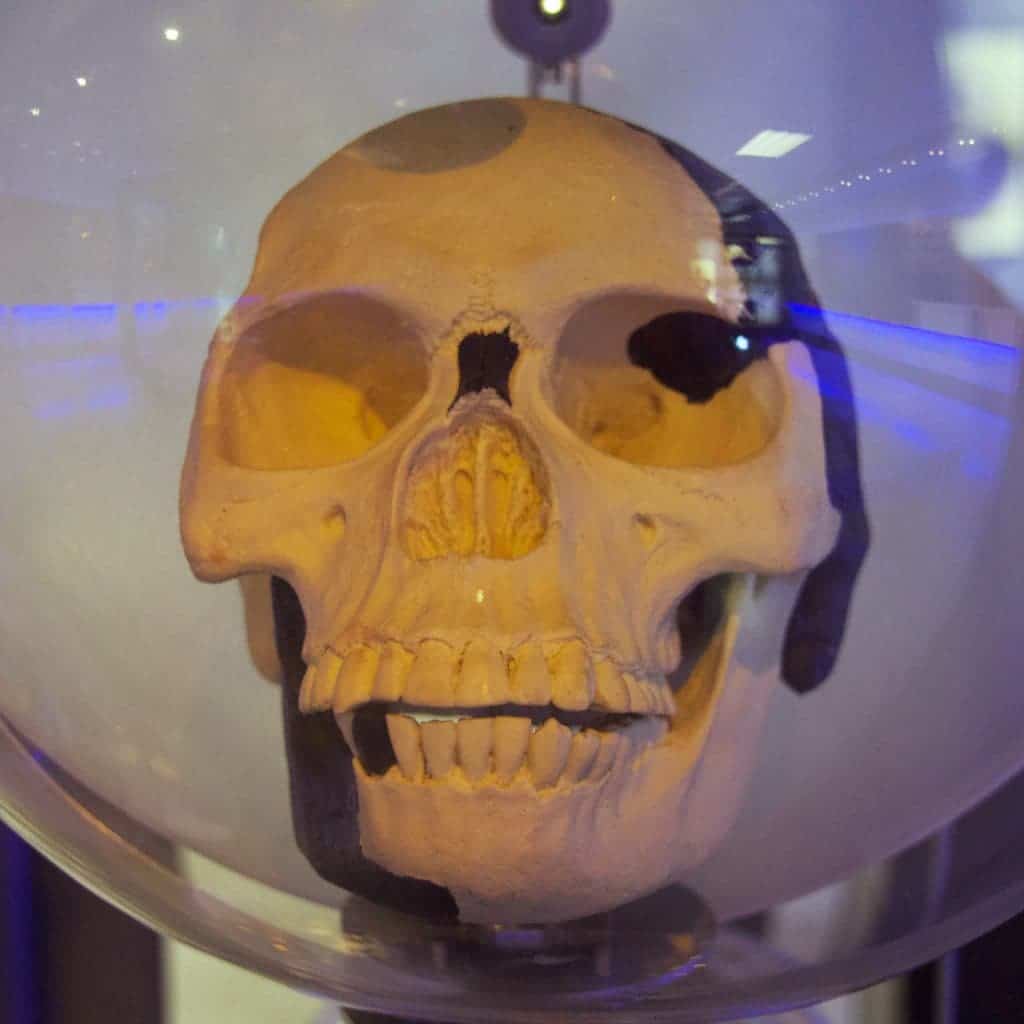In 1912, palaeontologist Arthur Smith Woodward and the amateur antiquarian Charles Dawson made a stunning announcement: they claimed they discovered a missing link in human evolution, a humanlike skull with an apelike mandible. The thing is… it was a human skull with an orangutan mandible. Dubbed the Piltdown Man, the skeleton was one of the most elaborate and damaging hoaxes in history, triggering a decade-long debate and setting countless researchers on a wrong path. Now, after more than a century, scientists believe they finally got to the bottom of this hoax.
The Hoax
In the early 1900s, British naturalism was undergoing an identity crisis. After being the driving force in science for centuries, they found themselves caught up by researchers from other countries, especially Germany, where Homo heidelbergensis had just been discovered. Not wanting to be outdone, several notable naturalists developed a type of obsession with human ancestors, trying to uncover all the missing links in the anthropological puzzles.
Dawson had found remains of what he thought was a human ancestor at a place called Piltdown in East Sussex, England. He wrote to his friend Sir Arthur Smith Woodward, announcing that he had uncovered a “thick portion of a human(?) skull which will rival H. heidelbergensis in solidity”. The two presented the discovery to the Geological Society of London in 1912, speculating that the individual lived 500,000 years ago. With both human and ape-like features, it was exactly what researchers of the time were expecting to find. But as time passed and more and more intermediate fossils were found (especially in Africa), Piltdown Man lost its significance as a singular missing link.
Even so, there was a lot of debate of the Piltdown Man, with a group of anthropologists claiming it was a fake, while others supported its validity. The hoax was exposed in 1953 when Oxford University researchers used a fluorine dating technique and showed that the specimen’s bones are of different ages. After more careful analysis, it was shown that the skull was amalgamated from both human and ape bones.
But who did it?

The portrait painted by John Cooke in 1915. Back row: (left to right) F. O. Barlow, G. Elliot Smith, Charles Dawson (pointing at the skull), Arthur Smith Woodward. Front row: A. S. Underwood, Arthur Keith, W. P. Pycraft, and Sir Ray Lankester. Photo by John Cooke, via wikimedia commons.
The Hoaxer
From the start, Woodward and Dawson were the main suspects – but not the only ones. Pierre Teilhard de Chardin, a French Jesuit priest who assisted the excavation was also a suspect, as was Martin Hinton, a volunteer who worked with Smith Woodward, among others. Even Sir Arthur Conan Doyle was a suspect, because he lived close to Piltdown and had a strong interest in the case.
Finally, in an article published in Royal Society Open Science, lead author Isabelle De Groote and more than a dozen British scientists reanalyzed the Piltdown Man remains using DNA analysis, spectroscopy, and 3D reconstructions to show that there was likely a single hoaxer: Dawson.
“It now appears that the chemical data supports the abundant circumstantial evidence that Dawson was the brains behind the hoax,” says geologist Stephen Donovan of the Naturalis Biodiversity Institute in Leiden, the Netherlands, who did not participate in the current study.
The team compared computer tomography (CT) scans of the mandible and teeth to known ape specimens and showed beyond the shadow of a doubt that they originated from an orangutan. Furthermore, DNA sequencing suggested that all the teeth came from the same orangutan, De Groote suspects the forger or forgers might have obtained from a curiosities shop.

Micro-CT scans and radiographs of the Piltdown teeth and bones, showing gravel inclusions. (Figure 5 from De Groote et al., open access in Royal Society Open Science.)
The consistency of the technique used on the skull also suggests that there was a single person doing the forging, and not a group. Dawson was an amateur geologist, archaeologist, and historian, regularly attending meetings of geologists and anthropologists. He loved fossil hunting and was quite prolific at it. He also had a habit of forging, as some of his other discoveries also turned out to be fake. But perhaps more tellingly, he wanted acceptance. Several times he applied to become a member of the Royal Society, but the scientific community rejected him every single time.
But Dawson was smart, and he played the oldest trick in the book when it comes to forgery: he showed people what they wanted to see.
“Dawson really played a very clever card,” De Groote says. “With the findings coming out of Germany, and Britain wanting to be at the forefront of science, there was this sense that, ‘We must have these fossils in Britain, as well.’”
But not everyone is convinced. Francis Thackeray, a paleoanthropologist at the University of the Witwatersrand in Johannesburg, South Africa, says he “strongly suspects” Teilhard de Chardin, the Jesuit priest. He had a reputation as a prankster, and Thackeray believes the two wanted to play a joke on Woodward, and it went seriously bad from there.
The Legacy
Whatever the case may be, the Piltdown case shows exactly why we should study hoaxes. Several anthropologists were set on a wrong track, believing that the fossil was real. Most notably, it shows how easy we can jump to conclusions when they simply fit what we want to see. Although a similar forgery is unlikely today given all the modern measuring techniques, there’s still a danger of scientists being too quick to accept a hypothesis just because it suits them. Especially in anthropology, where many scientists hoard their collections and refuse to get a second opinion, this can be a major problem.
“Piltdown Man sets a good example of the need for us to take a step back and look at the evidence for what it is,” she says, “and not for whether it conforms to our preconceived ideas.”










